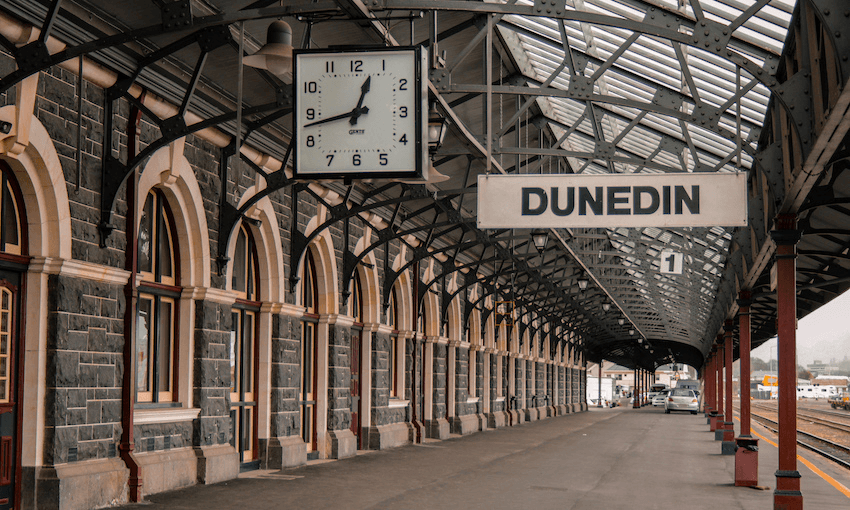The mothballing of Dunedin Railways represents a huge loss for the city where New Zealand’s rail preservation story started. Now, the community is asking for a chance to save their train, and with it the crown jewel in Dunedin’s tourist industry.
The Taieri Gorge Railway has been and meant many things.
The railway line is a reminder of the arduous construction of the 236km railway from Wingatui, outside Dunedin, to Cromwell, in central Otago. The push to run excursion trains at the end of the line’s service life is a testament to the willpower of volunteers and enthusiasts, and the operation of the line has made it a stand-out tourist feature of Dunedin, giving the historic railway station more of a purpose than just a postcard image.
The company was forced to close due to level three and four restrictions, but it has shocked staff to find out through the media that the line and equipment is to be mothballed. The company is, in effect, shutting down. Dunedin Railways will no longer exist in its traditional form, an indefinite red signal for a long-standing Dunedin institution.
It may be hard to sympathise if you haven’t been down south lately, or if you have never been to Dunedin at all. However, the closure of the company has devastated the local community and has hurt supporters of the railway, which has been railing tourists down the Taieri Gorge since 1979. Many have dubbed the Taieri Gorge Railway one of the best rail journeys in New Zealand, and its home at the Dunedin Railway Station, the most photographed building in New Zealand, brings a lot of people through the door.
Perhaps most significant about the mothballing is the loss of the rolling stock and equipment, which is as famous as the journey itself. Many of the bright yellow Scarrett carriages run by the railway are over 100 years old, and the seven DJ-class locomotives date from the late 1960s. The loss of jobs hurts the most. The company employed a range of both seasonal and permanent staff, from university students to seniors who loved the job too much to retire. Almost everybody has thrown their weight behind keeping the company going.
The “Keep Dunedin Rail Rolling” campaign has been launched to try to save the railway line and equipment, and support staff. Letters to the editor have since flooded in from people across New Zealand, and unions are supporting staff. Positivity reigns. There are plenty of ideas for what a literal train set can be used for.
Using the more modern, refurbished rolling stock, a commuter service between Dunedin and Mosgiel can easily be designed to be efficient and keep people in steady employment. It would be a more traditional setup to those in Auckland or Wellington but would be comfortable and would drop people right in the heart of the city.
Proposals for fast commuter rail have not yet reached Otago or Southland, and once again southerners feel as if they have been left out. A plan to use existing equipment to provide the people of the south with a train service to Dunedin is not out of the question but requires support from across the boardroom table and the wider southern region.
As of writing, the board of the company has been unwilling to move on any positive proposals forward. The company is owned by Dunedin City Holdings Limited, itself owned by the Dunedin City Council. Any vitriol to those responsible for the situation or the company’s fate will do nothing useful in the short term. A key phrase from this period keeps coming to mind. Stay strong and be kind.
Despite this, the mothballing of the line and equipment will continue in the meantime. This, in a city where New Zealand’s rail preservation story started, is to be the legacy of the current council, led by a mayor who was backed by the Green Party.
Dunedin’s tourist industry is dependent on its status as a heritage centre. Dunedin was New Zealand’s first city, and if you land in the Octagon, you will have no shortage of museums, art galleries, theatres, cinemas and historic buildings to visit within a 10-minute walk. On Moray Place alone is Dunedin’s First Church, established in 1848, and the Dunedin Town Hall, where The Beatles played to a roaring crowd in 1964. Looking straight down Stuart Street you can see the railway station, the affectionately nicknamed Gingerbread House, where trains should be running from.
All the community is asking for is a chance to save their train and with it the crown jewel in Dunedin’s tourist industry. If staff and management with railway experience endeavour to run the service to be more efficient than it was before, there is no telling what positive direction they can head towards. Forty years ago, people banded together to run trains down the Gorge – now that same momentum can be used to save jobs, create a service for local residents, and stop any chance of selling off or scrapping the iconic rolling stock.
If the future is rail, the future is now.



